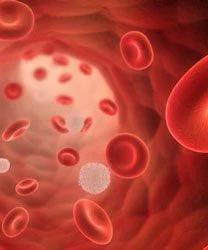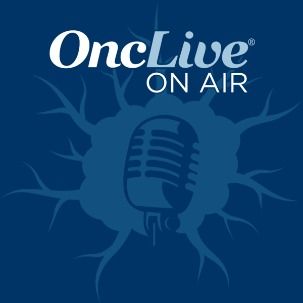Article
Mild COVID-19 Symptoms Are Associated with Poorer Outcomes in Sickle Cell Disease
Author(s):
Results from a survey of patients in the United Kingdom showed patients with sickle cell disease diagnosed with COVID-19 and who had mild symptoms were more likely to die or require mechanical ventilation than those with more severe symptoms of COVID-19.

Results from a survey of patients in the United Kingdom showed patients with sickle cell disease (SCD) diagnosed with novel coronavirus 2019 (COVID-19) and who had mild symptoms were more likely to die or require mechanical ventilation than those with more severe symptoms of COVID-19. Furthermore, COVID-19 mortality was higher among all ethnic groups compared with whites, according to data presented at the 2020 European Hematology Association Congress.1
Paul Telfer, MD, a senior lecturer at Queen Mary University of London, Barts Health NHS Trust in London, UK, delivered topline results from a survey of patient data reported to 10 regional Haemoglobinopathy Coordinating Centres up to June 5. The data included confirmed and suspected COVID-19 cases in 228 adults and children with hemoglobinopathies and rare anemias.
He said adults with SCD may be at increased risk from COVID-19, but it is not yet possible to make valid comparisons with the general UK population. These data will be updated with other national and international datasets to improve analysis of outcomes.
The World Health Organization reported more than 7.6 million confirmed cases of COVID-19 worldwide and 427,630 deaths as of June 14. That includes more than 2 million cases and 114,466 deaths in the United States and 294,379 cases and 41,662 deaths in the United Kingdom.2
Roughly 80% of patients in the study were diagnosed with SCD, with thalassemia disorders, and diamond blackfan and other rare anemias. Overall, patients in the study were more likely to exhibit severe symptoms, but those with mild symptoms were roughly twice as likely to die and more than 2.5 times more likely require mechanical ventilation.
“This was not expected,” Telfer said. “There may be confounding factors that need to be taken into account when interpreting these results.”
In the general population, men are much more likely to die from COVID-19. Data published April 29 showed that infected men were 2.4 times more likely to die than women (70.3% vs. 29.7%, P = .016).3 However, Telfer and colleagues found that men with sickle cell were not at significantly greater risk for death.
“Gender didn’t seem to be a risk factor for adverse outcome,” Telfer said. “Although there were slightly more women who became infected, when you look at the adverse outcomes in terms of infected patients who had an adverse outcome, there's really no significant difference between men and women.”
Age has been identified as a risk factor for death in the general population and that was also true in patients with SCD. Data published in The Lancet estimated that the total overall death rate from COVID-19 was 0.66%, from a low of 0.0016% in children aged 9 years and younger to a high of 7.8% in people aged 80 years and older. Patients aged 80 and older had the highest estimated case fatality ratio (13.4%; 95% CI, 11.2-15.9).4
Telfer and colleagues found that patients aged 50 years and older had the highest rate of infection, death, and serious outcomes. Older patients were nearly 4 times more likely to die and 3 times more likely to require ventilation compared with patients aged 19 to 49 years.
Results from a recent study conducted by the British government found that black ethnic groups had the highest age standardized diagnosis rates of COVID-19 per 100,000 population were in people of black ethnic groups (486 in women and 649 in men) while people in white ethnic groups had the (220 in women and 224 in men).5
After accounting for the effect of sex, age, deprivation and region, investigators found that the risk for death among people of Chinese, Indian, Pakistani, other Asian, Caribbean and other black ethnicity was 10% to 50% greater than whites.5
In the United States, 22% counties are disproportionately black and accounted for 52% of COVID-19 diagnoses and 58% of COVID-19 deaths nationally.6
Telfer said that racial disparities could explain some of the findings in the sickle cell population.
References:
- Telfer P, De La Fuente J, Sohal M, et al. Real-time national survey of COVID-19 in hemoglobinopathy and rare inherited anemia patients. Presented at: the 2020 European Hematology Association Congress. Abstract #LBA 2606.
- Real-time national survey of COVID-19 in hemoglobinopathy and rare inherited anemia patients. WHO Coronavirus Disease (COVID-19) Dashboard. Accessed June 14, 2020. covid19.who.int
- Jin JM, Bai P, He W, et al. Gender differences in patients with COVID-19: focus on severity and mortality. Front Public Health. 2020;8:152. doi:10.3389/fpubh.2020.00152
- Verity R, Okell LC, Dorigatti I, et al. Estimates of the severity of coronavirus disease 2019: a model-based analysis. Lancet Infect Dis. 2020;20(6):669‐677. doi:10.1016/S1473-3099(20)30243-7
- Public Health England. COVID-19: review of disparities in risks and outcomes. Published June 2, 2020. Accessed June 14, 2020. assets.publishing.service.gov.uk/government/uploads/system/uploads/attachment_data/file/892085/disparities_review.pdf
- Millett GA, Jones AT, Benkeser D, et al. Assessing differential impacts of COVID-19 on black communities. Ann Epidemiol. 2020;10.1016/j.annepidem.2020.05.003. doi:10.1016/j.annepidem.2020.05.003









